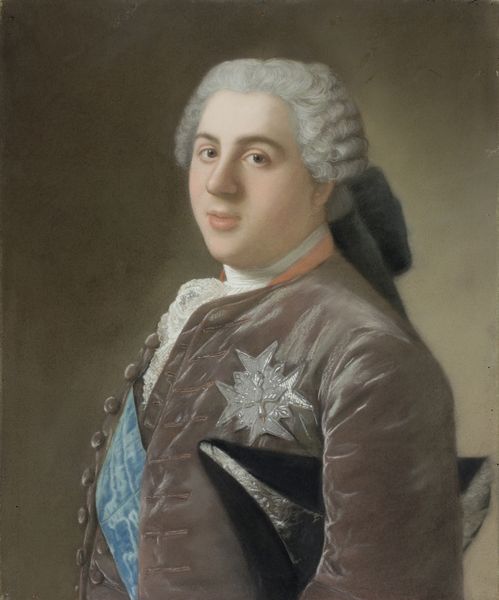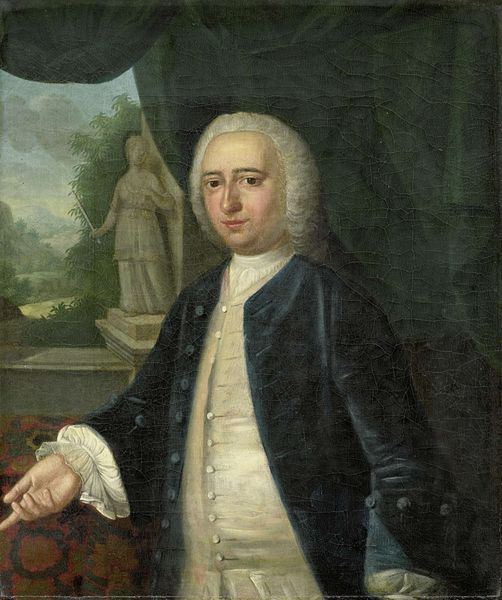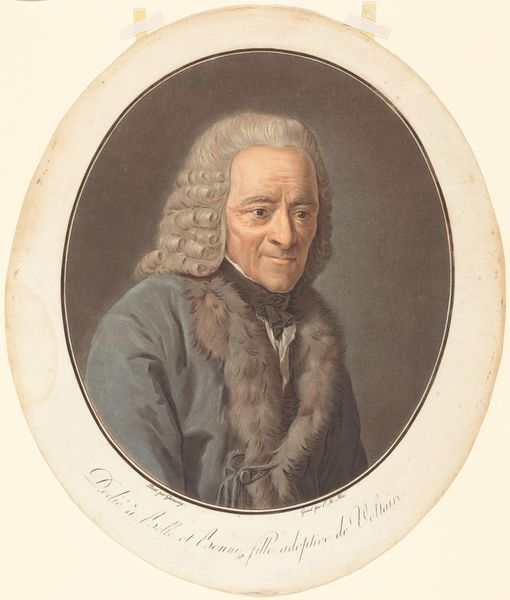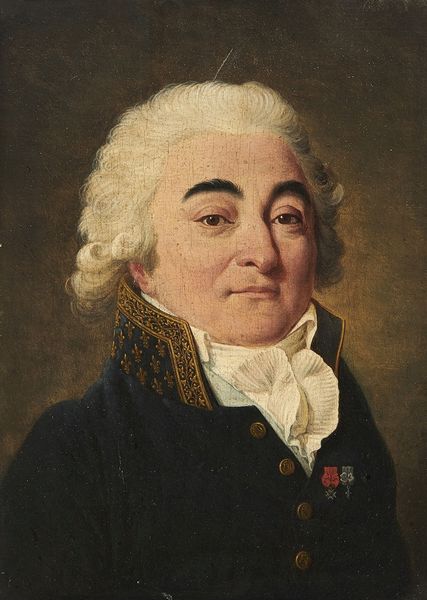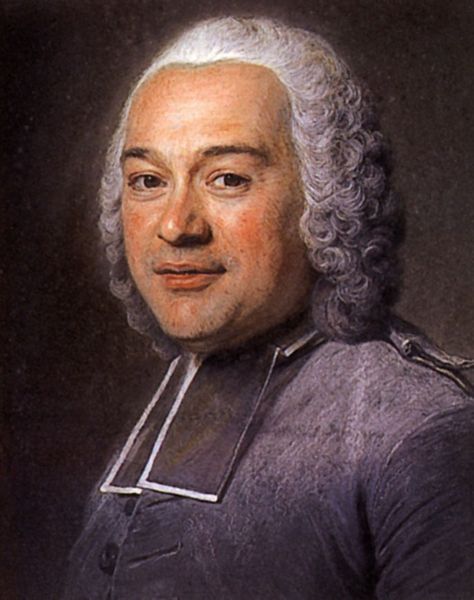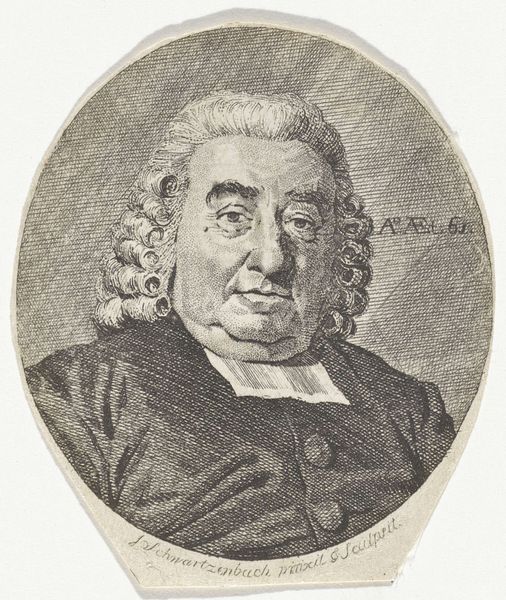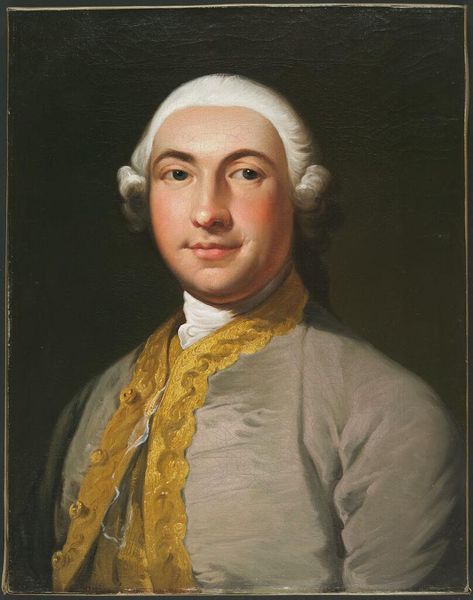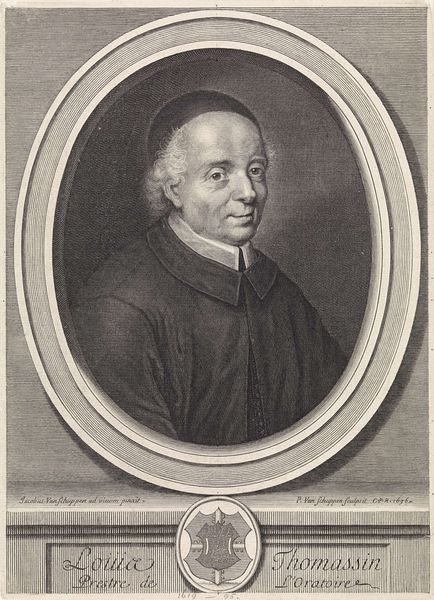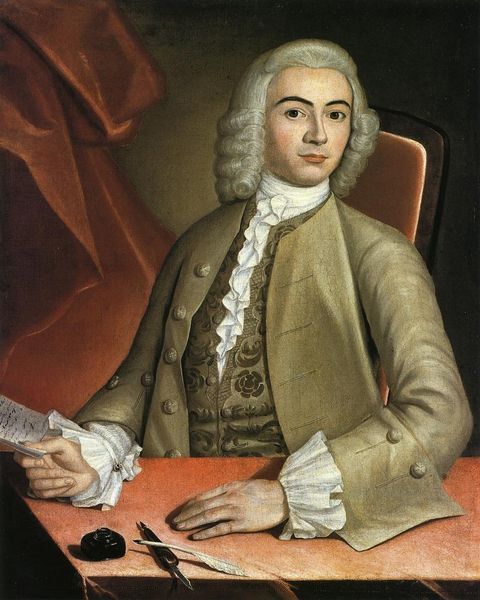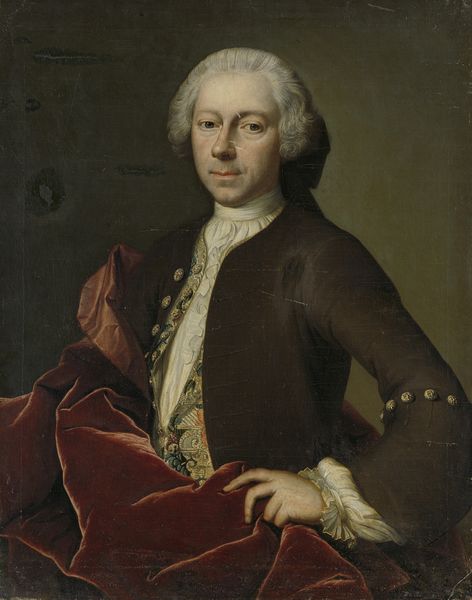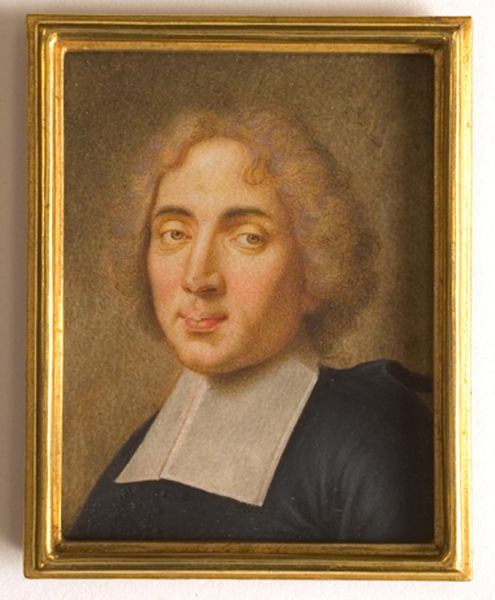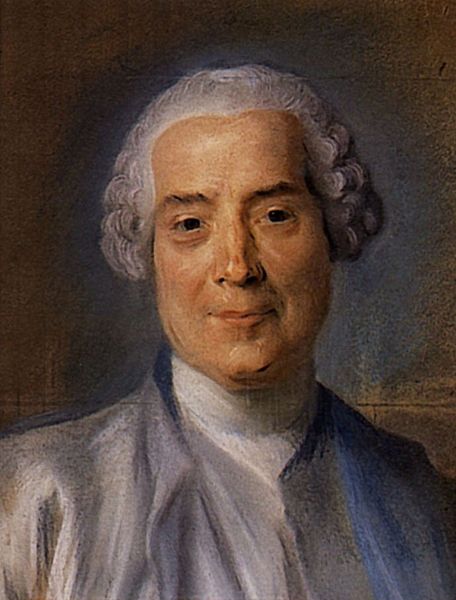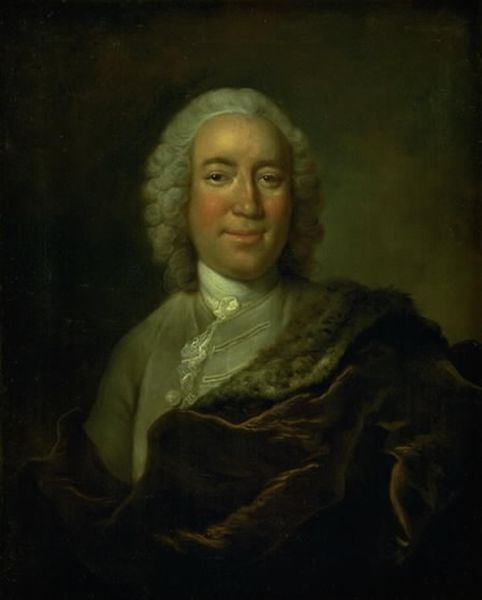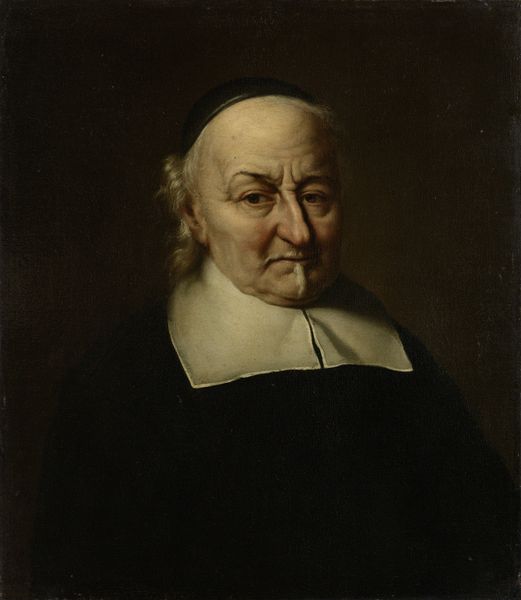
painting, pastel
#
portrait
#
painting
#
pastel
#
history-painting
#
realism
#
rococo
Copyright: Public domain
Curator: Before us hangs the portrait of "François-Emmanuel Pommyer, abbot of Bonneval" captured in pastel by Maurice Quentin de La Tour. Editor: What strikes me immediately is the slight smile and knowing glance. It’s as if he's privy to some delightful secret, a glint in his eyes suggesting worldly awareness that contrasts rather humorously with the darkness of his habit. Curator: De La Tour was known for his insightful portraits. It's not just a likeness; it hints at character, position, and arguably, the societal contradictions of the French Abbots prior to the revolution. How do you read the symbolism of this sartorial darkness? Editor: Well, darkness can be symbolic of authority, restraint, but in this context, given the times and the playful expression captured by de la Tour, it feels almost like a costume. The lightness of his powdered wig adds another layer of irony. There’s an implied tension between his public role and private thoughts. Curator: Indeed. Considering pre-revolutionary France, the image of the abbot carries a weight of institutional power dynamics and the rise of enlightenment ideals questioning exactly this type of religious elite. His gaze and expression create tension, suggesting a world on the cusp of radical societal change and a role that requires complex negotiations with both tradition and emerging ideologies. It is a critical view that might not flatter the historical order, perhaps. Editor: Right. Those seemingly small symbols—the glance, the smile, the stark contrast of color—become potent carriers of meaning when viewed through the lens of history and cultural change. Each artistic choice reflects the shifting paradigms of the time, prompting reflections about authority, tradition, and the very nature of belief. Curator: So what do you think, beyond the historical analysis, how should we understand it today? Editor: Well, now, the portrait encourages viewers to reconsider easy associations between appearance, identity, and power structures. To challenge any singular reading of a person, a system, or a period. It reminds us to examine our contemporary understanding with nuanced perspectives. Curator: A worthwhile consideration. Thank you for lending your expertise to explore some layers behind this artwork. Editor: It was my pleasure, indeed. The work revealed to me more than a surface.
Comments
No comments
Be the first to comment and join the conversation on the ultimate creative platform.
